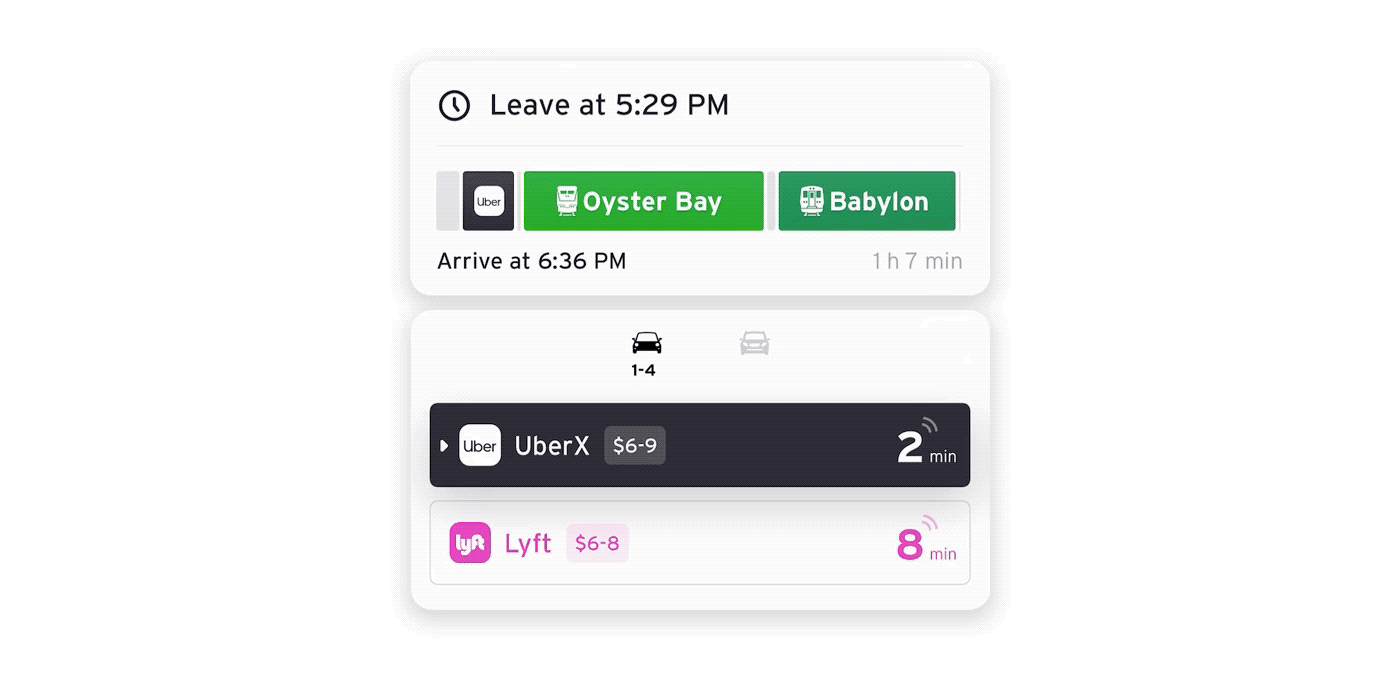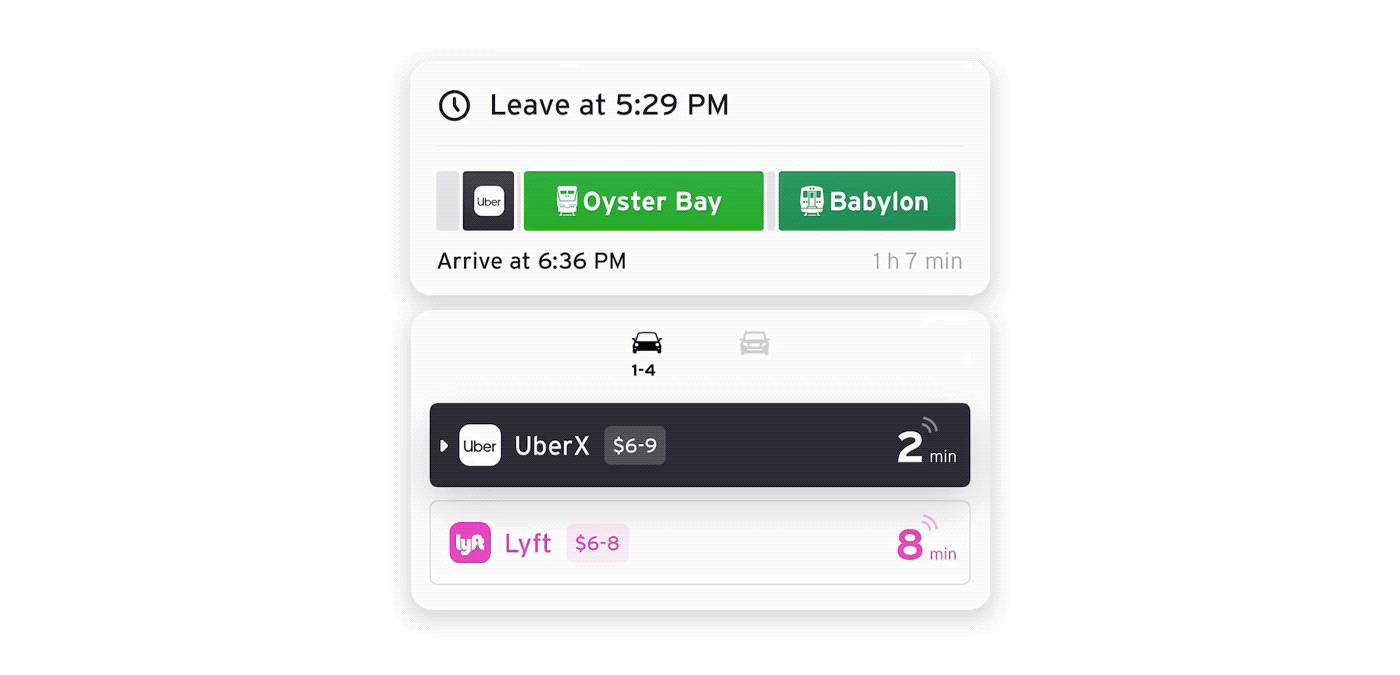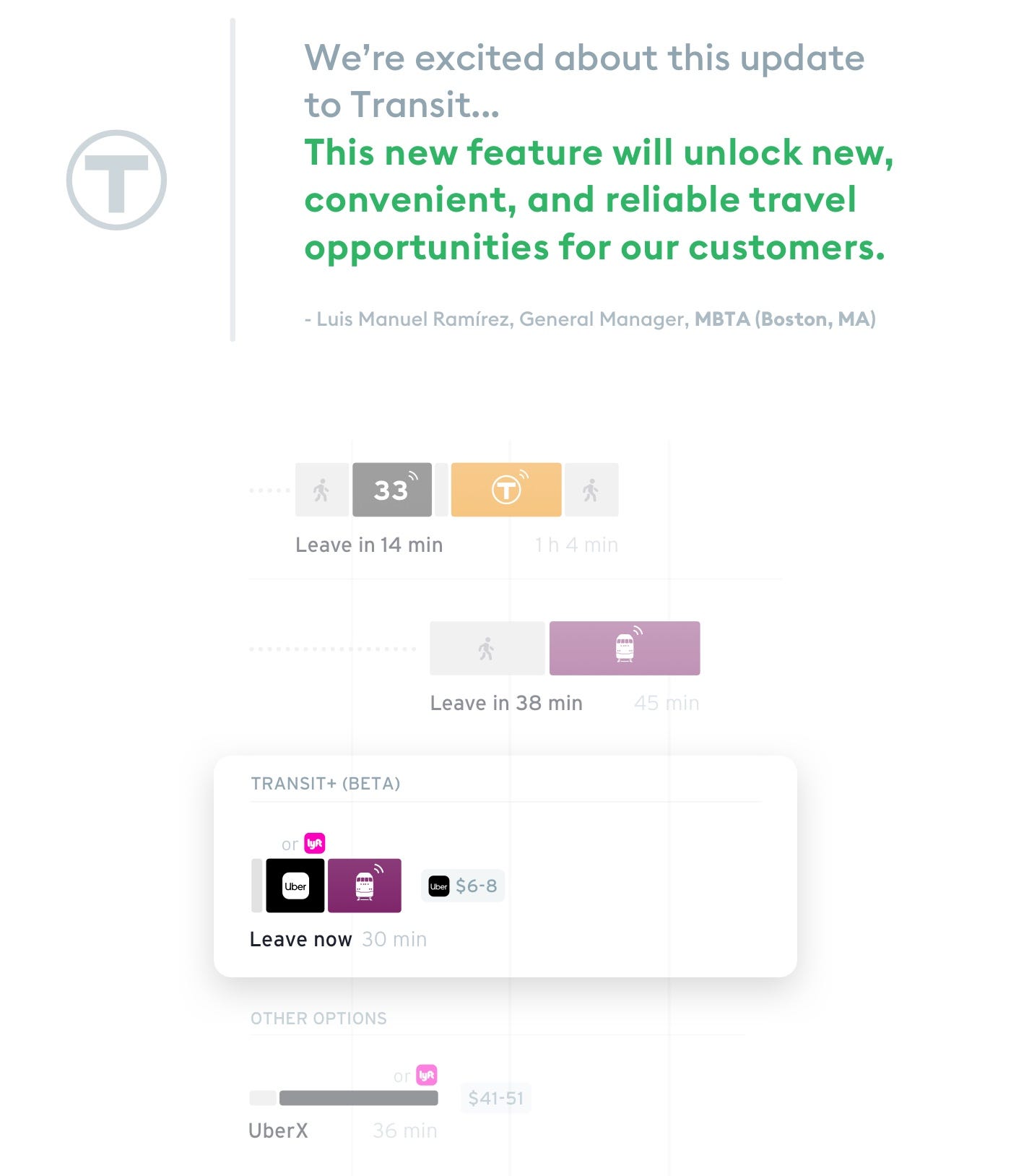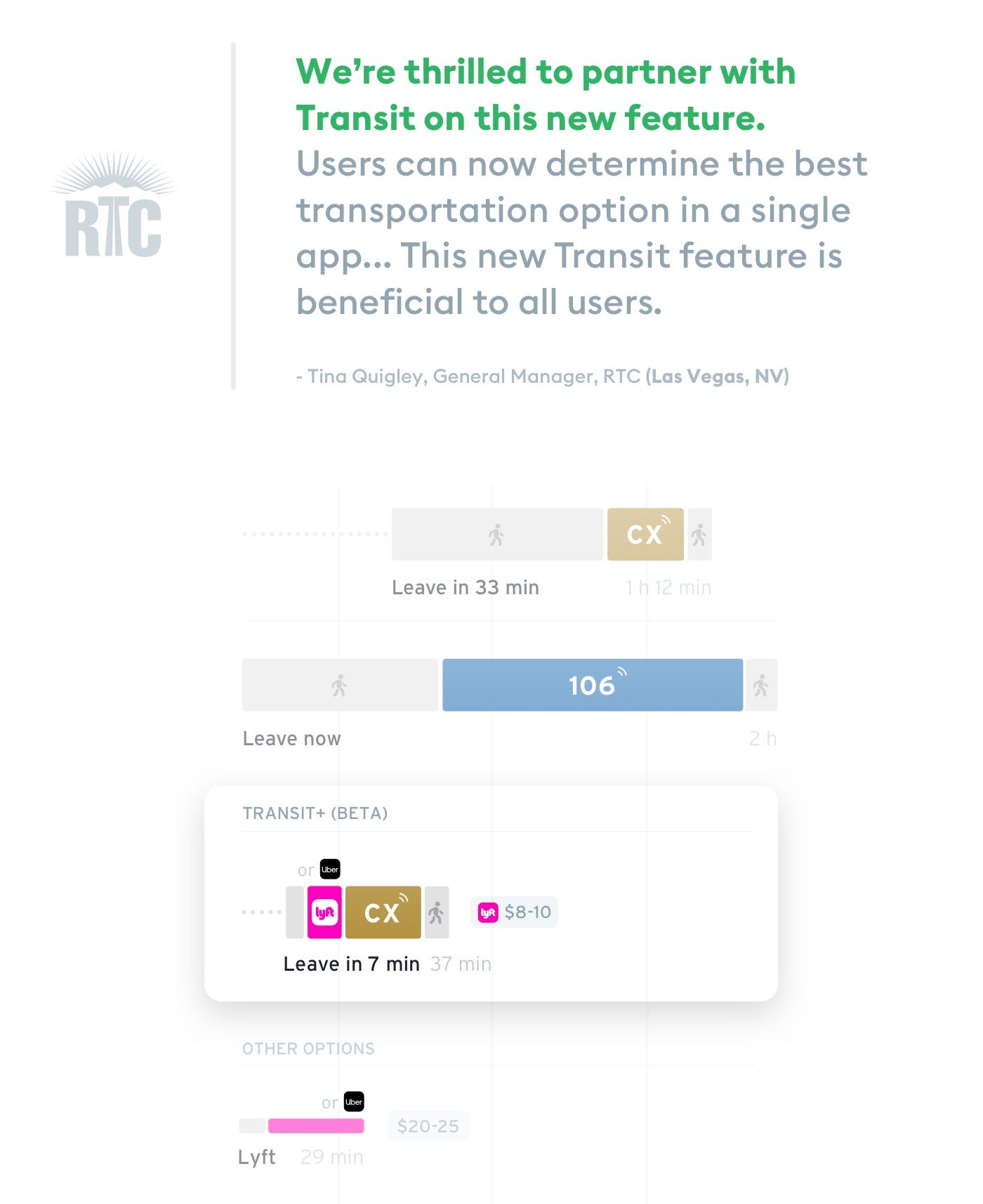Finally: a real solution to first and last mile trips đđđ
Hereâs why
In most cities, to complete a multimodal trip, you have to use one app to get public transit times, then book a well-timed ridehail to get to the station, before your train or bus. And thatâs assuming you even know your multimodal options! (Good luck, tourists.) Todayâs multimodal trips require so much local knowledge; so many juggled apps; so many arrival time comparisons; and so many opportunities to get snagged by missed connections.
To illustrate this point, consider our copywriter, Joe. (He takes the bulk of his ridehails after tippling beers in obscure Montreal neighbourhoods đ.) For Joe, doing the mental math of âthe ridehail ETA is 7 minutes, the drive itself is 7 minutes, and the last metro leaves in 17 minutes. Will I make it?!?â can be daunting. So tipsy Joe gives up, and takes a ridehail the whole way home.


To ensure riders like Joe arenât forced to make crude choices between ridehail and transit, we had to make it dead simple to take a multimodal trip. We had to design our trip planner so that public transit was at the forefront, transfers were easy, no mental math was required, and ridehail wasnât replacing public transit for trips, or trip legs, that had no business using a car.
By integrating multiple ridehailing operators (Uber, Lyft, Via, Ola, TĂŠo & more to come) we can offer the best ridehailing suggestionsâââwhile helping more riders unlock the efficiencies of public transit. If one ridehailer isnât fast enough to make your train, weâll find you one that is, where possible.


When youâre under pressure to make a transit connection (10-minute ridehail ETAs, a 15-minute window to make your train, and a 60-minute wait until the next train comes) you might reflexively say âto hell with the trainâ and book a ridehail, all the way home.
But with Transitâs trip planner, you can quickly find out if another ridehail service can help you make the train. You can hail the ride, pay for the trip, and arrive at the stationâââall without having to do mental math and juggle apps. Which secures a win for you (cheaper trip, shorter commute) and a win for your city (one less pointless car on the road).


Itâs been a while since cities logged a âwinâ from ridehail. While ridehail services promised to connect more people than ever to public transit, recent studies suggest that ridehail is adding more car traffic and stealing rides away from public transit. âšď¸


In theory, ridehailing services are perfect complements to transit. They make it easier to live car-free, knowing you can always hail a car, without needing one in your driveway. And for people in transit deserts, ridehail can connect them to transit hubs (for first- and last-mile trips.)


And itâs whyâââdespite some misgivingsâââtransit agencies have partnered with ridehailers like Uber, Lyft, and Via.
But itâs also why transit agencies are so psyched about transit-oriented ridehailing. Weâve taken ridehailâs âfirst- and last-mileâ advantage out of theory, and put it to into practice. With Transit+, we now emphasise connections to transitââârather than itineraries that jealously try to capture the bulk of your miles. Whatâs more, weâve integrated more operators, so agencies arenât put in the awkward position where their âofficial transit appâ doesnât support their âofficial ridehailerâ.
Forced to pick âtransit or ridehailâ, Transit+ now offers agencies and riders a thirdâââand betterâââchoice. And while still in beta, our multimodal trip suggestions are getting better every day.
